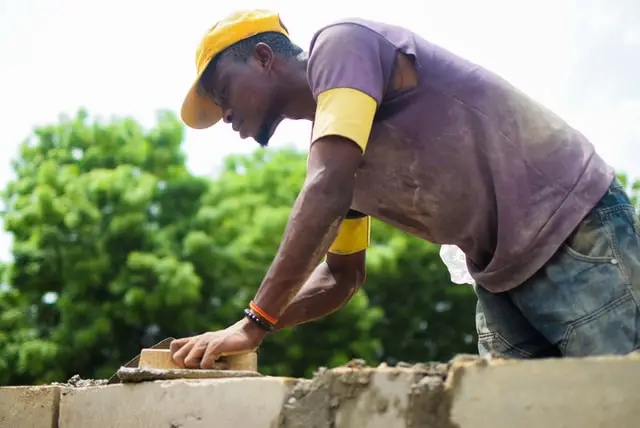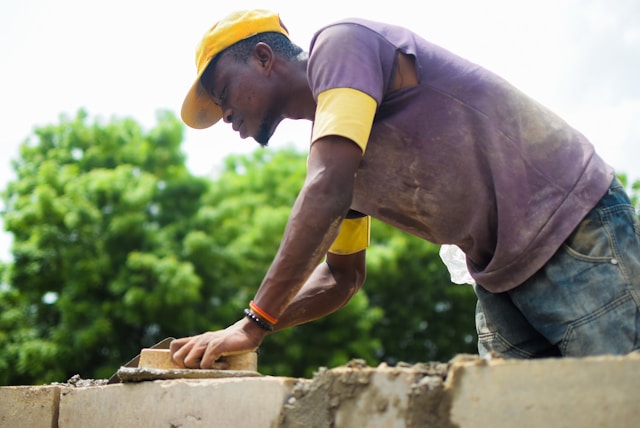Bricklayers are among the oldest and most essential tradespeople in the construction industry. Their work forms the literal and figurative foundation of our homes, schools, commercial buildings, and public infrastructure. Although their craft may seem straightforward to the layman, seemingly simply laying bricks and mortar in neat, precise lines, the skill, knowledge, and physical endurance required to do this job well make bricklaying a highly respected and vital trade.
Bricklayers are the undoubted heroes of the construction industry, artisans whose work forms the physical skeletons of homes, shopping malls, offices, schools, hospitals, hotels, restaurants and public spaces. Their skill combines precision, endurance, and craftsmanship, making them an essential part of all construction. They have evolved naturally from basic building work to cutting-edge urban developments requiring high skill and knowledge levels. There is no doubt that professional bricklaying has become a respected and indispensable trade.

The Evolution of Bricklaying as a Profession
Bricklaying as a skilled trade has developed over centuries, evolving from a basic craft to a recognised and regulated profession. While the use of bricks in construction dates back thousands of years, the art of bricklaying as a career with structured bricklayer training and certification really began during the Industrial Revolution.
How Did the Bricklaying Profession Evolve?
- Ancient Origins: The use of bricks in building projects can be traced to ancient civilisations such as Mesopotamia and Egypt, where early forms of brick construction were used for temples, homes, and public infrastructure. Early bricks were made from mud and straw, highlighting the ingenuity and creativity of human construction techniques. As materials evolved, so too did the methods of bricklaying, leading to the widespread use of fired bricks made from clay, which provided greater durability and versatility.
- Early Craftsmen: These early brick workers were often artisans who relied on skills passed down through generations.
- Industrial Revolution: The invention of machines to mass-produce bricks and advances in kiln technology dramatically increased production, creating a surge in demand for skilled bricklayers in rapidly expanding cities.
- Formal Training Programs: As the industry grew, structured apprenticeships and bricklaying training emerged, ensuring consistency and safety on job sites.
- Modern Professionalism: Today, bricklaying is a certified trade, often governed by construction trade associations, such as Master Builders South Africa (MBSA), the Constructional Engineering Association of South Africa (CEA(SA)), and the Construction Alliance South Africa (CASA). Nowadays, there are clear career pathways, licensing, and advanced training in areas such as renovation, restoration and decorative masonry work.
What Do Bricklayers Do?
Bricklayers do far more than build walls or pathways or contribute to a building’s appearance. Their work is fundamental to creating safe, stable, and enduring structures. This highly skilled trade requires precision, technical knowledge, and attention to detail at every point of the build in which they are involved. From constructing walls and pathways to intricate architectural features, bricklayers perform a wide range of tasks that form the backbone of any project. As a profession, bricklaying has evolved over centuries, yet it remains grounded in the timeless principles of craftsmanship and structural integrity.
Their everyday responsibilities include:
- Construction Work: Bricklayers build load-bearing walls, chimneys, fireplaces, arches, and other essential structures for homes and buildings. Bricklayers build internal and external walls and other structural and decorative features such as partitions, fireplaces, arches, and chimneys.
- Structural Integrity: Bricklayers ensure that the walls and buildings they construct are strong, durable, and capable of withstanding environmental pressures such as wind, rain, and seismic activity. This is especially crucial for load-bearing walls and foundational elements. Bricklaying, when properly undertaken, results in low-maintenance, fire-resistant, and energy-efficient structures.
- Repair and Restoration: They restore or repair damaged or deteriorating walls, stonework, and structures, often working on brick restoration services for older or historical buildings.
- Mortar Preparation: A fundamental part of the job involves mixing and applying mortar in the correct ratios to create a strong bond between bricks or blocks. The proper mixture is vital to a solid bond and the resulting walls.
- Cutting and shaping bricks to fit specific design or structural needs.
- Brick Design Layouts: Laying bricks in various patterns for both functional and decorative purposes.
- Plan Interpretation and Layout: Bricklayers read and interpret architectural drawings and building plans to determine layout and ensure accurate execution of the project and that structures are built to precise specifications.
- Tools and Techniques: Bricklayers use various hand and power tools, including trowels, spirit levels, hammers, chisels, and masonry saws. Ensuring structures are level, plumb, and properly aligned is critical in preventing cracks, fissures, structural failures and unbalanced walls.
- Collaborative Work: Bricklayers often work alongside other construction professionals, including builders, site managers, carpenters, electricians and general labourers, to ensure projects are completed efficiently and safely.
- Specialisation: With experience, bricklayers may choose to specialise in decorative brickwork, repointing, stone masonry, or the restoration of historic and heritage buildings. Repointing in masonry is the process of removing deteriorated or damaged mortar from the joints between bricks or stones and replacing it with fresh mortar. This restoration technique not only improves the wall’s appearance but also reinforces its structural integrity and helps prevent moisture penetration.
The Ongoing Value of Professional Bricklaying
In our rather frenetic, fast-moving world, bricklaying remains a vital, respected, and sought-after trade. Even with the growing popularity of prefabricated construction and synthetic materials, traditional brick building is still highly valued for several reasons, including its:
Structural Integrity and Long-Term Performance: Brick structures are known for their strength and resilience, ensuring durability over centuries. Many brick buildings will be demolished rather than falling prey to the natural ravages of time, keeping the beauty and character of older buildings ever present in our lives.
Thermal Efficiency: Brick provides excellent insulation, assisting in regulating indoor temperatures and reducing energy costs.
Low Maintenance: Once constructed, brick walls require minimal upkeep, making them a practical choice for homeowners and builders alike.
Fire Resistance: Brick offers superior fire resistance, enhancing safety in residential and commercial buildings.
Aesthetic Appeal: With a timeless look and a variety of styles and colours, brick adds character and beauty to any structure, making it a popular choice in design.
Conclusion
Whether building modern homes or restoring historic landmarks, skilled bricklayers play a crucial role in shaping our cities and communities. These craftsmen are vital to urban expansion, rural development, and the ongoing growth of public infrastructure. Their work goes beyond mere functionality; it embodies a deep purpose, transforming raw materials into structures that protect, shelter, and inspire. As construction methods evolve, bricklayers adapt to new materials, safety regulations, and technologies, just like professionals in other trades. Bricklaying is more than merely a construction job. It is a unique blend of art, science, and tradition. The skill and dedication of bricklayers significantly enhance the durability and beauty of our built environment. Looking to the future, the resilience of this craft serves as a testament to the timeless nature of masonry and its essential role in shaping our landscapes.

